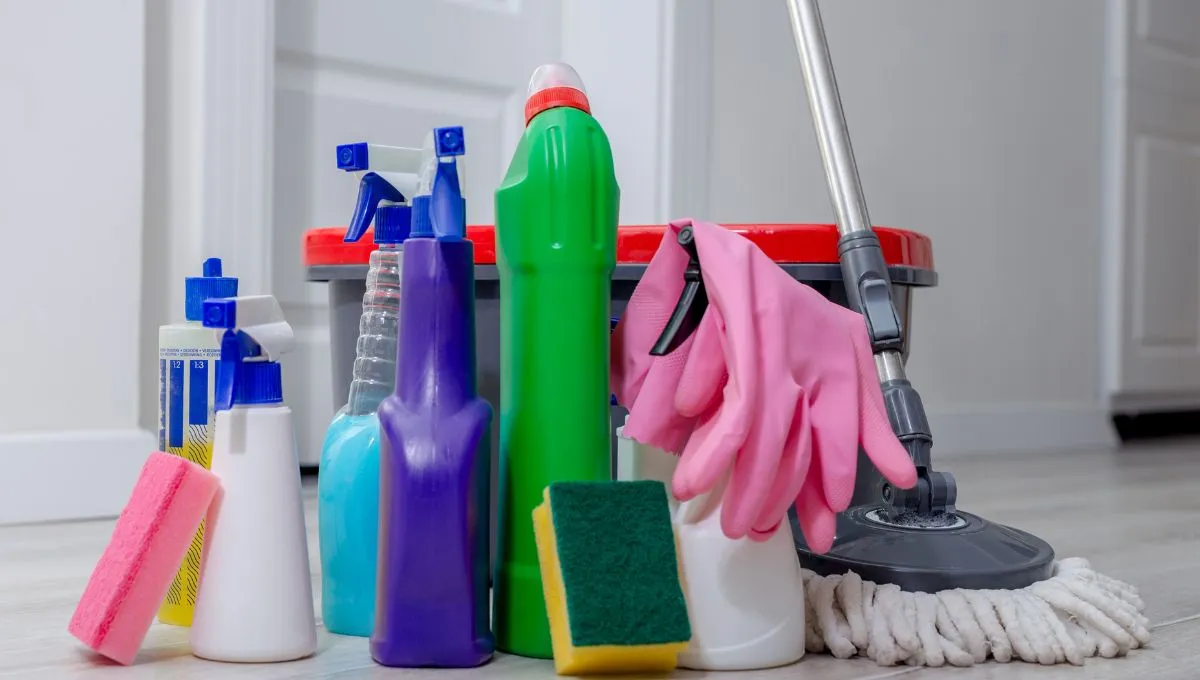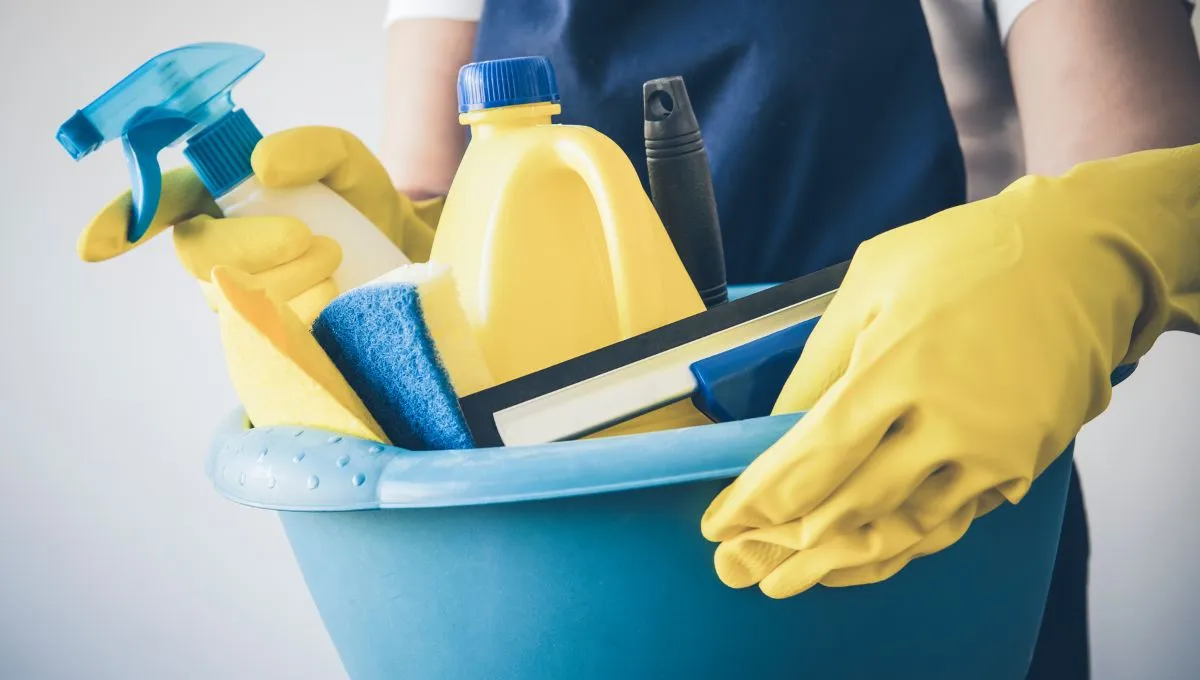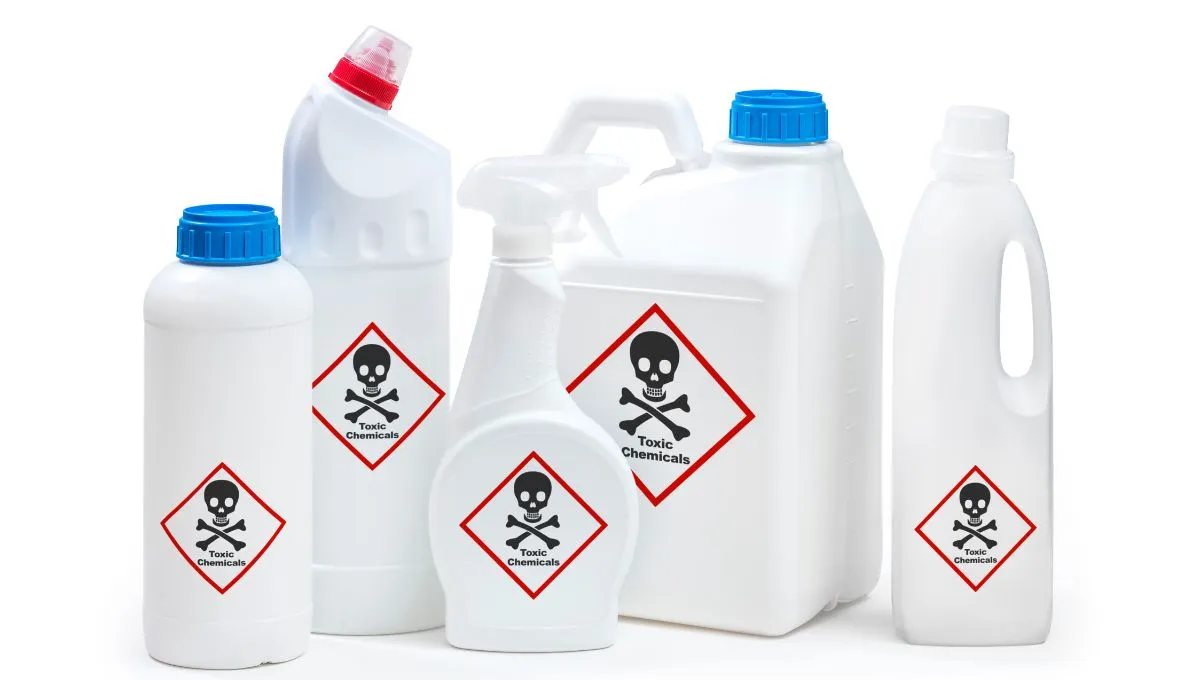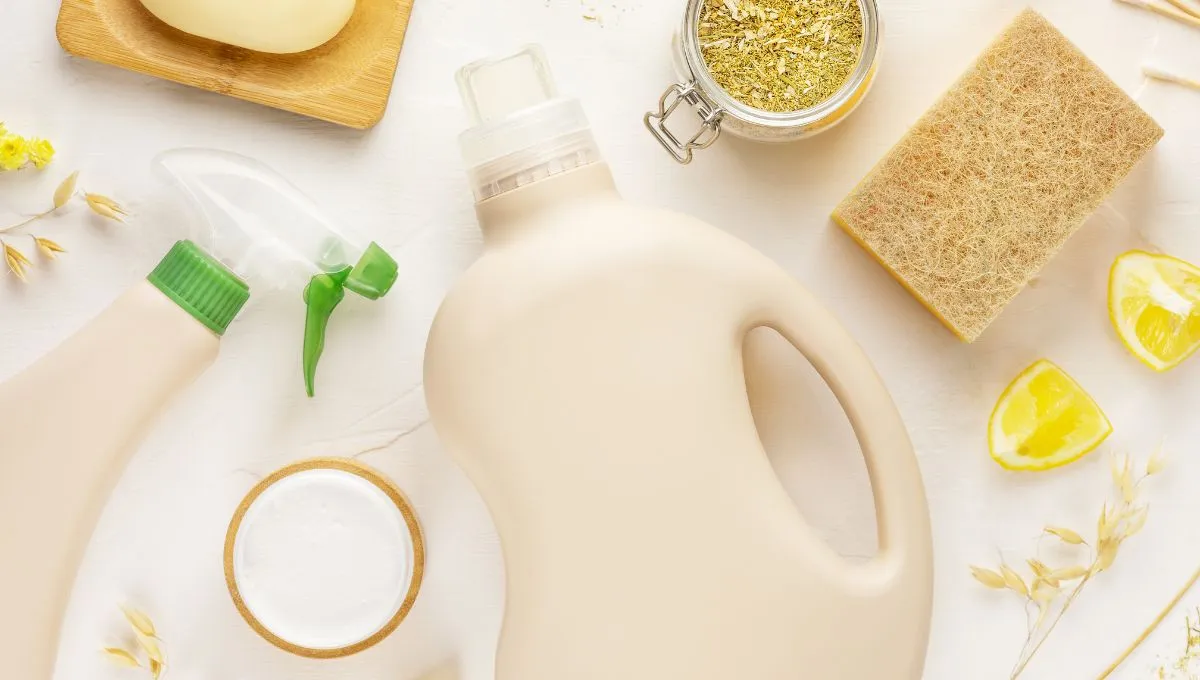
Are you tired of worrying about damaging your septic system with harsh chemicals? You’re not alone. Many homeowners in Australian communities face this challenge. This guide presents an essential list of cleaning products safe for septic systems in Australia, equipping you with the knowledge to protect your septic system and ensure its longevity with the right products and practices.
What Does Septic Safe Mean?
“Septic safe” refers to products that won’t harm the delicate balance of bacteria within a septic system. These products are compatible with the system’s operation. A product with a “septic safe” label is typically natural, biodegradable, and formulated to break down effectively within the tank without harming the beneficial bacteria responsible for waste decomposition. In essence, septic-safe products can be useful in homes with septic systems without risking damage or disrupting the system’s crucial processes.
Importance Of Septic-Safe Cleaning Products
Septic-safe cleaning products are vital for maintaining a healthy and functional septic system. They minimise environmental impact, protect public health and safety, and ensure compliance with regulatory guidelines, making them an integral part of responsible waste management practices.
1. Environmental Impact
Septic-safe cleaning products are crucial for minimising environmental harm. We can significantly reduce water pollution by choosing biodegradable products free from harsh chemicals. These products help preserve the delicate balance of ecosystems and protect aquatic life by preventing the release of harmful substances into the environment.
2. Health and Safety
Using septic-safe cleaning products is essential for protecting public health and safety. Harsh chemicals found in many conventional cleaning products can contaminate groundwater, posing significant risks to human health if consumed or exposed to skin. Using septic-safe alternatives, we protect ourselves and our families from these potential health hazards.
3. Regulatory Guidelines
Adhering to regulations for septic systems is not only responsible but also essential. Using septic-safe cleaning products ensures compliance with environmental regulations to protect our natural resources. Failure to follow these guidelines can result in fines or penalties for violating environmental laws, making choosing products that meet regulatory standards imperative.
Want to learn more? Check our detailed post on “Wastewater Regulation.“
How to Identify Septic-Safe Products: Ingredients to Look For and Avoid

There are specific ingredients to look for and avoid to determine if a product is septic-safe.
Ingredients to Look For
- Biodegradable Ingredients: Look for products labelled as biodegradable, as these break down naturally without harming the septic system.
- Natural Ingredients: Products containing natural ingredients, such as plant-based cleaners, are generally safer for septic systems.
- Non-Toxic Ingredients: Ensure the product is non-toxic and free from harsh chemicals.
- Enzymes and Bacteria Additives: Some septic-safe products contain enzymes or bacteria that help break down organic matter in the septic tank.
Ingredients to Avoid
- Antibacterial Agents: Avoid products with antibacterial properties, such as triclosan, as they can kill beneficial bacteria in the septic system.
- Chlorine Bleach: Chlorine bleach is harsh and can disrupt the bacterial balance in the septic tank.
- Ammonia: Products containing ammonia can harm the septic system’s bacteria.
- Phosphates: High levels of phosphates can cause issues in the septic system and contribute to environmental problems like algal blooms.
- Quaternary Ammonium Compounds: These are common in disinfectants and can harm septic bacteria.
Septic-Safe Cleaning Products Available in Australia
Choosing safe cleaning products for septic systems is crucial for maintaining the system’s health and the environment. In Australia, you can find a variety of septic-safe options, including:
- Septic-safe toilet cleaner: Ecover Toilet Bowl Cleaner
- Septic-safe toilet paper: Scott 1000 Trusted Clean Toilet Paper
- Septic-safe drain cleaner: Green Gobbler Septic Saver Treatment Pods
- Septic-safe shower cleaner: Zero Co Bathroom & Shower Cleaner
- Septic-safe dishwasher tablets: Zero Co Dishwasher Tablets
- Septic-safe laundry detergent: Zero Co Laundry Liquid or Omo Active Clean Laundry Detergent
- Septic-safe hand wash: Zero Co Handwash Liquid
- Septic-safe shampoo: Zero Co Shampoo
- Septic-safe conditioner: Zero Co Conditioner
- Septic-safe body wash: Zero Co Bodywash
Many other brands offer septic-safe alternatives for various cleaning needs. Look for products specifically labelled as “septic safe” or those with natural, biodegradable ingredients.
Best Disinfectant for Septic Systems
The best disinfectants for a septic system are natural and biodegradable, ensuring they do not harm the beneficial bacteria within the tank.
Safe Disinfectant Options
- White Vinegar: It is an excellent natural disinfectant safe for septic systems.
- Hydrogen Peroxide: It is a powerful disinfectant that breaks into water and oxygen, making it safe for septic systems.
- Baking Soda: While not a disinfectant, you can use it with other cleaners to maintain a clean and fresh environment.
- Essential Oils: Oils like tea tree and lavender have natural disinfectant properties; you can use them in small amounts diluted with water.
- Borax: It is a septic-safe natural mineral with disinfectant properties.
Remember to use natural disinfectants sparingly and according to instructions to avoid inundating the septic system.
Cleaning Products to Avoid with Septic Systems

Several cleaning products can wreak havoc on your septic system. These include:
- Bleach-based products: Products like Clorox Disinfecting Bleach and Lysol Bleach Multi-Purpose Cleaner kill beneficial bacteria.
- Ammonia-based cleaners: Cleaners like Windex Ammonia-D Pine-Sol Original can disrupt the microbial balance.
- Chemical drain cleaners: Chemical cleaners like Drano and Liquid-Plumr are highly corrosive and can damage pipes.
- Antibacterial soaps and detergents: Products like Dial Antibacterial Liquid Hand Soap and Dawn Antibacterial Dishwashing Liquid kill essential bacteria.
- Chlorine-based toilet bowl cleaners: Like bleach, products like Clorox Toilet Bowl Cleaner with Bleach and Lysol Power Toilet Bowl Cleaner can kill beneficial bacteria.
- Heavy-duty degreasers and solvents: Products like Zep Heavy-Duty Citrus Degreaser and Goo Gone are toxic to septic bacteria.
- Non-biodegradable cleaning wipes: Products like Lysol Disinfecting and Clorox wipes can cause physical blockages.
- Chemical-based floor cleaners: Mop & Glo and Murphy’s Oil Soap can disrupt the bacterial balance.
Tips for a Healthy Septic System
Maintaining a healthy septic system is vital for its longevity and efficiency. Follow these essential tips:
- Use septic-safe products: Cleaning products, laundry detergents, and personal care items.
- Schedule regular pumping: Have your septic tank pumped every 3-5 years to remove accumulated solids.
- Conserve water: Avoid overloading the system by promptly fixing leaks and spreading water usage.
- Properly dispose of waste: Don’t flush anything other than toilet paper and human waste. Avoid pouring fats, oils, and grease down the drain.
- Limit garbage disposal use: Minimise solid waste entering the septic tank.
- Be mindful of landscaping: Don’t plant trees or shrubs with deep roots near the septic system.
- Regular inspections: Schedule professional inspections to identify potential issues early on.
Maintaining Your Septic System: Key Do’s and Don’ts
Let’s recap the essential practices for keeping your septic system in top shape:
Do’s:
- ✅ Use septic-safe cleaning products: This includes all-purpose cleaners, laundry detergents, dish soaps, and personal care items.
- ✅ Conserve water: Fix leaks promptly, use water-efficient appliances, and spread out water-intensive activities to avoid overloading the system.
- ✅ Schedule regular pumping: Have your septic tank pumped every 3-5 years (or as recommended by a professional) to remove accumulated solids.
- ✅ Install an effluent filter: This helps protect your drain field by filtering out solids.
- ✅ Use eco-friendly products: Opt for natural cleaners like vinegar, baking soda, and plant-based soaps.
Don’ts:
- ❌ Flush anything other than toilet paper and human waste: Wipes, feminine hygiene products, paper towels, and other non-biodegradable items.
- ❌ Pour fats, oils, or grease down the drain: These can clog pipes and disrupt the septic system’s function.
- ❌ Use harsh chemicals: Avoid bleach, ammonia, drain cleaners, and antibacterial products.
- ❌ Overload the system: Avoid excessive water use, especially from laundry and showers.
- ❌ Use garbage disposal excessively: It adds solids to the tank that can lead to faster buildup.
Following these guidelines and choosing septic-safe products will ensure your septic system stays healthy for years, saving you from costly repairs and protecting the environment.
Adapting Your Cleaning Routine for Septic System Safety

Transitioning to a septic-safe cleaning routine involves a few key adjustments:
- Replace harsh chemicals: Swap out conventional cleaners with their septic-safe counterparts.
- Read labels carefully: Look for products labelled as “septic safe.”
- Use natural alternatives: Embrace natural cleaners like vinegar and baking soda for many cleaning tasks.
- Reduce water usage: Be mindful of water consumption to avoid overloading the system.
By making these simple changes, you can effectively clean your home while protecting your septic system.
Ready to switch to septic-safe cleaning products? At Taylex, you can browse our eco-friendly and septic-safe cleaning solutions to protect your septic system and the environment.
List of Cleaning Products Safe for Septic Systems Australia: FAQs
What is Safe to Put in a Toilet Tank?
White vinegar is safe to put in a toilet tank. Avoid harsh chemicals like bleach or products that contain it.
Is Vinegar Safe for Septic Systems?
Yes! Vinegar is safe for septic systems. It is a natural cleaner that will not harm the beneficial bacteria in the tank.
Can You Put Bleach in Toilet Tank?
No! We don’t recommend putting bleach in the toilet tank. Bleach can damage the rubber seals and harm the septic system by killing beneficial bacteria.
Are Tide Pods Septic Safe?
Tide Pods are generally considered septic-safe but should be used in moderation to avoid overwhelming the septic system.
Is Borax Septic Safe?
Yes! Borax is septic-safe when used in small amounts. It is a natural cleaner that won’t harm septic systems.
Is Citric Acid Safe for Septic Tanks?
Yes! Citric acid is safe for septic tanks. It is a natural, biodegradable cleaner that won’t disrupt the bacterial balance.
What Toilet Cleaner is Safe for Septic Systems?
Look for toilet cleaners labelled as septic-safe, which typically avoid harsh chemicals and rely on natural cleaning agents.
Is Bleach Safe for Septic Systems?
No, bleach is not safe for septic systems. It can kill the beneficial bacteria needed for the system to function properly.
Can I Use Drano with a Septic System?
No, using Drano with a septic system is not recommended, as it contains harsh chemicals that can harm the septic tank’s bacteria.
Is White Vinegar Safe for Septic Systems?
White vinegar is safe for septic systems. You can use it as a natural cleaning agent.
What Cleaning Products Can I Use with a Septic Tank?
Use products labeled as septic-safe, which usually contain natural ingredients like vinegar, baking soda, and borax, avoiding harsh chemicals and antibacterial agents.